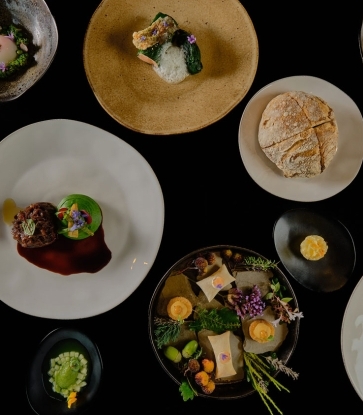Yet the humble grain, or at least the processed white version of it, has been at the crosshairs of health authorities in recent years for its role in diabetes.
Back in 2012, Harvard researchers studied over 350,000 participants and noted that an additional serving of white rice raised the risk of Type 2 diabetes by 10 percent. This is explained, in part, by its high glycemic index (GI) score which causes spikes in blood sugar.
But these same researchers note that modern sedentary lifestyles have a large part to play as rice has been a diet staple for millennia and health issues are only cropping up now. One solution: reduce the amount you eat, but do it without starving.
One way to achieve this is by way of adding seeds, nuts and grains. While the purity of a simple bowl of white rice is certainly hard to beat, these small modifications not only add interest in flavor and texture, but also ramp up the amount of nutrition you’d get in one sitting. Here’s are seven nuts and grains you can add for a healthier bowl of rice:
1. Barley
Incorporating barley into short-grained rice yields a nutty taste and a chewy texture of al-dente pasta while providing more manganese, phosphorus and proteins. The grain cooks at the same rate as rice so it can be mixed and cooked at the same time. To get this right, combine 1 cup of barley and 1 cup of rice with 2 ½ cups of water and cook as per normal in your rice cooker.
2. Quinoa
For those looking to increase the amount of protein in your diet, quinoa is your go-to grain. The cereal, which is native to South America, takes only 15 minutes to cook—add it into your rice towards the end if you prefer it still crunchy. While white rice and quinoa is an easier combination, consider cooking with brown rice to include more fiber.
3. Sesame Seeds
There’s more to sesame seeds than just using it as an oil or to sprinkle on top of burger buns. They’re packed with nutrients like proteins, fat and fiber, and taste best when roasted and crunchy. To get the best out of flavor and texture, dry roast the sesame seeds on a hot saucepan until slightly browned, and mix it in with cooked rice.

This ancient grain was a staple of the Aztecs and is just as protein-packed as quinoa. Unlike quinoa however, amaranth turns mushy when cooked, so go by your preference when cooking it with rice. A good ratio to start with is1/4 cup of amaranth to 3/4 cups of other grains.
5. Soybeans
Soybeans have long been cooked with glutinous rice in Asia as part of leaf-wrapped dumplings and often come seasoned with savory additions. The beans are also so protein-packed that it’s recommended as a replacement for those on meat-free diets. Soak the soybeans overnight so they soften up, then dehull them and add your desired amount into the rice to cook simultaneously.
6. Mung Beans
Healthy ingredients can be difficult to find but thankfully, mung beans are found everywhere, and are packed with nutrients like magnesium, manganese, potassium, copper, folate, zinc and vitamin B6. Like soybeans, soak the green beans overnight before cooking. Recipe-wise, a traditional Iranian dish named Mash M'tubuq calls for a ratio of ½ cup of mung beans to 1 cup of rice. It also calls for other ingredients like yogurt, onions, molasses and dill—but there’s no reason why you can’t try it out plain.

Often thought of as the main ingredient for hummus, garbanzo beans are also used in many rice dishes in Mediterranean and Indian cuisines. Save yourself some time and go for the canned version rather than the dried version, as getting the buttery texture it’s so loved for requires more than just soaking. As canned versions are already cooked, simply add your desired amount towards the end of the rice cooking cycle and give it a good stir.
This article originally appeared on the MICHELIN Guide Singapore website.





















